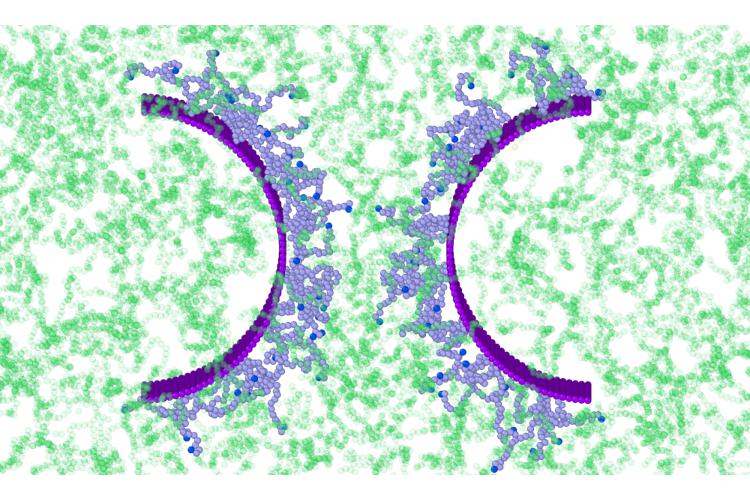- Imprimer
- Partager
- Partager sur Facebook
- Partager sur X
- Partager sur LinkedIn
Séminaire
Le 17 octobre 2024

Valerio Sorichetti (ISTA, Austria)
Polymers and filaments are ubiquitous in biology, from the cytoskeleton to DNA and the extracellular matrix. Despite their diversified chemical structures, and the multifarious environments in which they are embedded, these molecular structures all share fundamental general properties that are captured by simple physical models. In this seminar, I will discuss two projects I have worked on, showing how polymer physics, and in particular computational coarse-grained models, can be used to gain insight on biological processes.
In the first project, we investigated the growth of vimentin intermediate filaments. These semiflexible cytoskeletal filaments, which play a fundamental role in providing mechanical resilience to the cell, grow via end-to-end binding. This behavior is very different from the one of actin and microtubules, which mainly assemble via the addition of monomers at one end. Using a combination of scaling theory, coarse-grained simulations and in vitro experiments, we discovered that semiflexible filaments assemble faster both than rigid or flexible ones by taking advantage of transversal bending fluctuations [Sorichetti and Lenz, PRL 131, 2023]. We compared the predictions of our model to experimental data of vimentin filaments assembly, finding that at high concentrations filament growth slows down due to the entanglement between multiple filaments [Quang, Sorichetti et al., PRX 13, 2023].
In the second project, we studied how the charged protein Ki-67 regulates chromosome clustering during cell division by forming a condensate with RNA molecules floating in the cytoplasm. This process is a particular of complex coacervation, the phase-separation of charged polymers. It has also been shown that the effectiveness of this attraction mechanism is increased by the presence of a localized charge patch on Ki-67, found to be remarkably well conserved in different organisms. Using coarse-grained simulations, we showed that the polymer-mediated attraction between two electrically charged polymer brushes, modeling the chromosomes, is enhanced when the brushes have a highly charged patch [Hernandez-Armendariz, Sorichetti et al., Molecular Cell 84, 2024], even when the total charge of the molecule is unchanged [Sorichetti et al., in preparation]. We hypothesize that this mechanism is fundamental for cell division in multicellular organisms, and could play an important role in the formation of biolomolecular condensates in general.
I will conclude the seminar with a perspective on my future research projects, which bring together soft matter physics, biology and material science.
Contact: Eric Bertin
Date
11:00
Localisation
LIPhy, salle de conférence
- Imprimer
- Partager
- Partager sur Facebook
- Partager sur X
- Partager sur LinkedIn